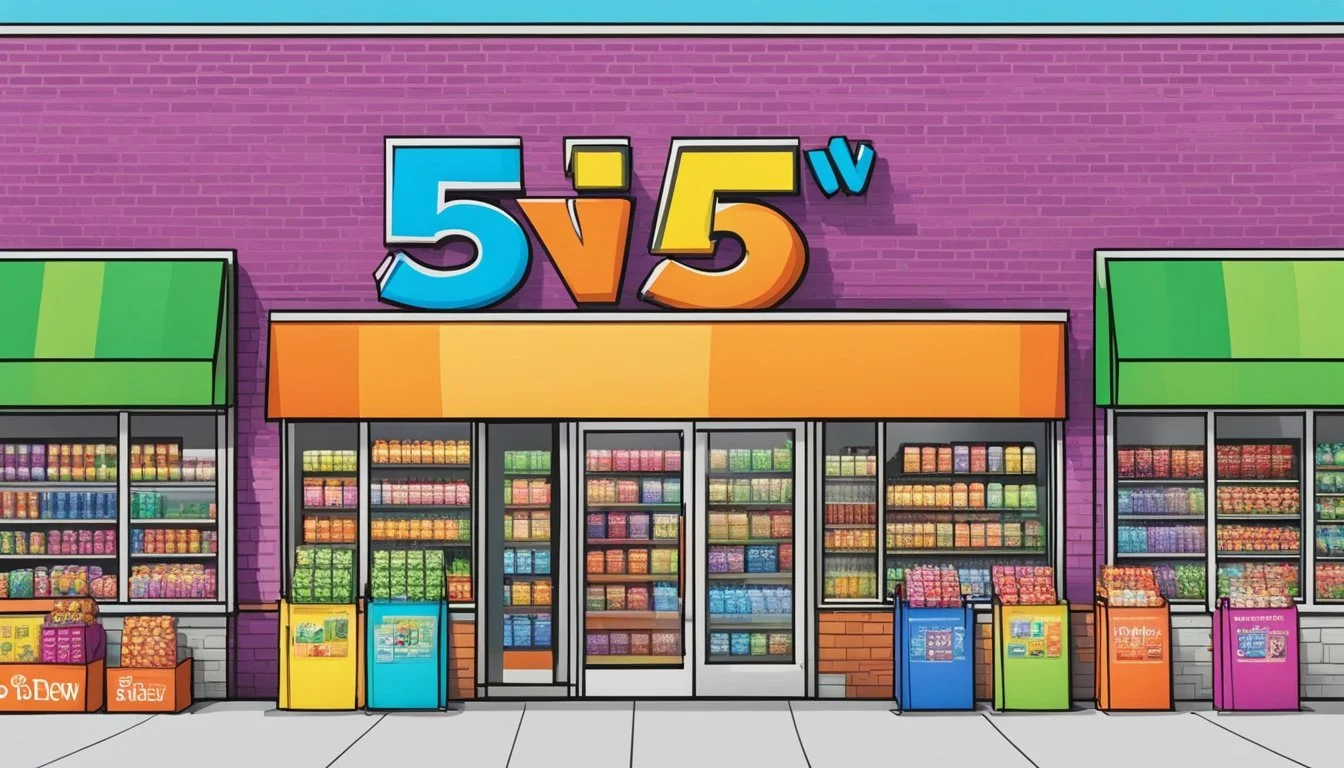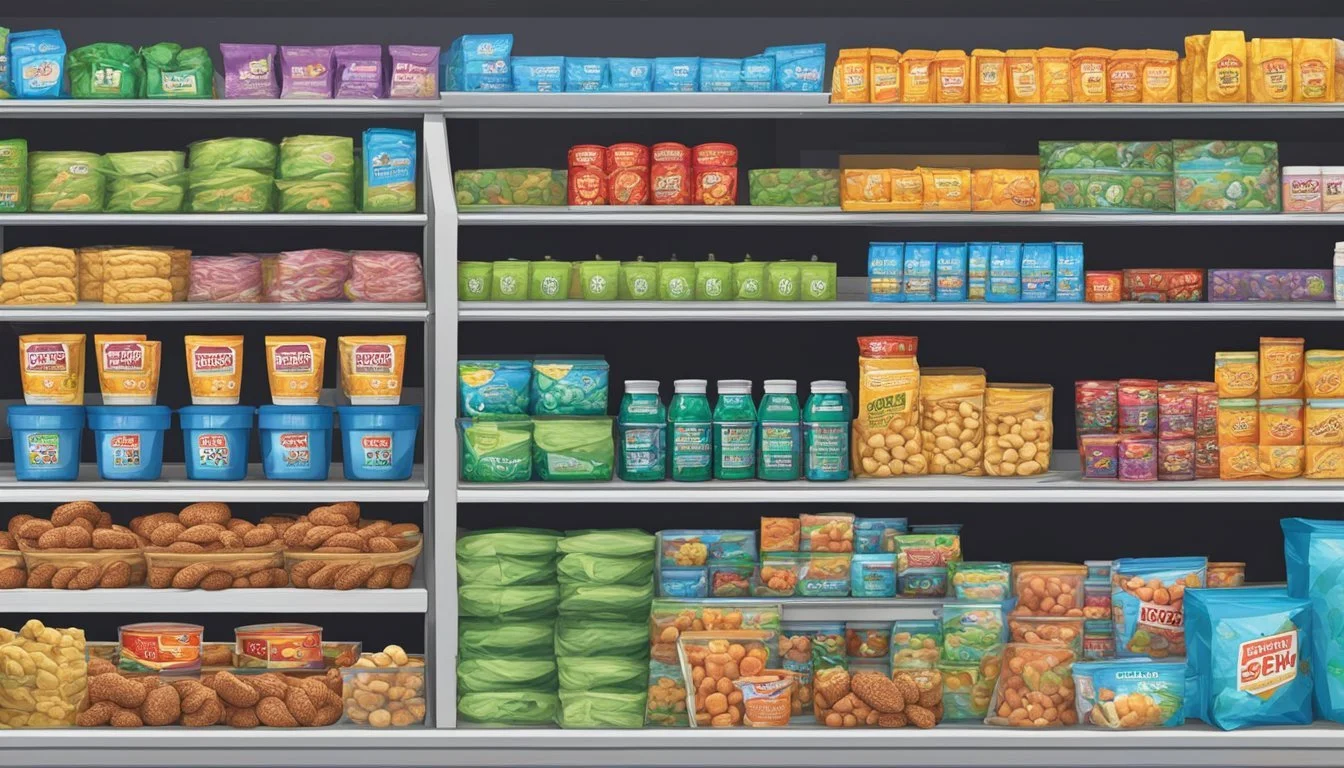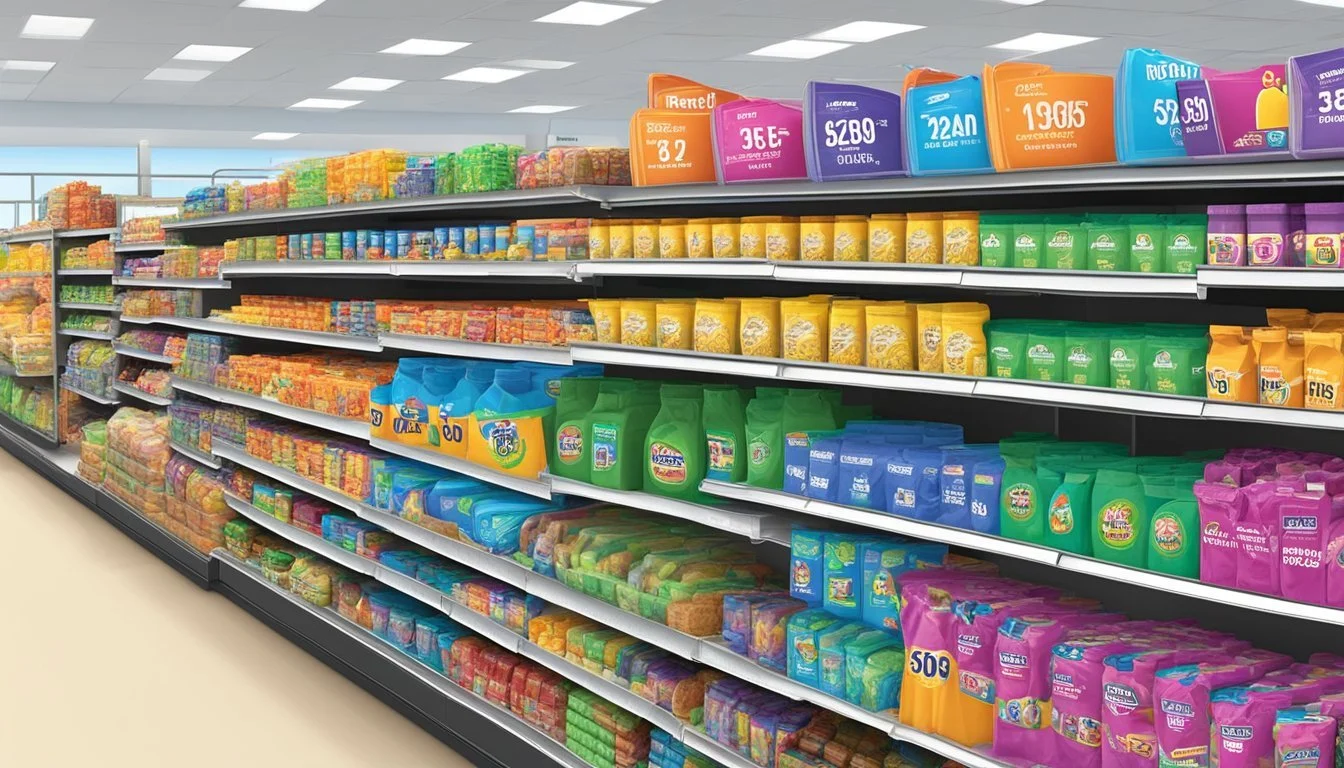Is Five Below Cheaper Than Hannaford?
A price comparison of discount stores
Five Below and Hannaford are two popular retail chains in the United States, each catering to different consumer needs. Five Below specializes in offering a wide range of products priced at $5 or less, while Hannaford is a supermarket chain known for its grocery offerings. When comparing prices between Five Below and Hannaford, it's important to note that they primarily sell different types of products, making a direct comparison challenging.
While Five Below focuses on providing extreme value on items like candy, games, and accessories, Hannaford's strengths lie in offering competitive prices on grocery products. Hannaford has been recognized for its affordability in comparison to other supermarket chains, often beating competitors on common shopping items. The choice between these two stores ultimately depends on the specific products a shopper is looking for and their location within the United States.
Understanding Five Below
Five Below is a retail chain known for its affordable products and unique shopping experience. The company's business model, diverse product range, and strategic pricing structure have contributed to its rapid growth and popularity among budget-conscious consumers.
Business Model
Five Below operates on a low-price, high-volume approach. The retailer targets younger demographics, primarily teens and pre-teens, but also attracts budget-conscious adults. Its stores are designed with a vibrant, fun atmosphere to encourage browsing and impulse purchases. Five Below's expansion has been aggressive, with over 1,000 locations across the United States. The company's growth strategy includes opening new stores in various markets and expanding its online presence to compete with e-commerce giants.
Product Range
Five Below offers a wide array of products across multiple categories. These include:
Tech accessories
Beauty and personal care items
Toys and games
Home decor
Party supplies
Seasonal items
The retailer frequently rotates its inventory, introducing new products to keep customers engaged. This strategy encourages repeat visits as shoppers seek out new, trendy items. Five Below also carries name-brand products at discounted prices, adding value for customers seeking recognizable labels without the hefty price tag.
Price Structure
Initially, Five Below's pricing model capped all items at $5 or less, true to its name. However, the company has adapted its strategy to accommodate changing market conditions:
Most items remain priced at $5 or less
A "Ten Below" section was introduced for items priced up to $10
Some tech products may be priced higher due to manufacturing costs
Despite these changes, Five Below maintains its commitment to providing value. The retailer carefully selects products that can be sold at low prices while still generating profit. This pricing strategy allows customers to purchase a variety of items without breaking the bank, making Five Below an attractive option for budget-conscious shoppers.
Unpacking Hannaford
Hannaford is a prominent grocery chain known for its quality products and competitive pricing. The company's focus on fresh produce, meats, and healthy options has made it a popular choice for shoppers.
Company Overview
Hannaford was founded in 1883 in Portland, Maine. It has grown to over 180 stores across New England and New York. The company is now a subsidiary of Ahold Delhaize, a Dutch retail conglomerate.
Hannaford emphasizes sustainability and community involvement. They support local farmers and producers, offering a wide range of regional products in their stores.
The chain is recognized for its commitment to health and wellness. Many locations feature in-store pharmacies and nutritionists to assist customers with dietary needs.
Merchandise and Quality
Hannaford is known for its high-quality fresh produce and meats. The stores offer a wide selection of fruits and vegetables, often sourced from local farms when in season.
The meat department is a standout feature. Hannaford provides various cuts of beef, pork, and poultry, including organic and grass-fed options.
Their store brand, "Hannaford," offers a range of products across different categories. These items are often competitively priced and match the quality of national brands.
Hannaford also caters to health-conscious shoppers. They stock a variety of organic, gluten-free, and specialty diet products.
Pricing and Value Perception
Hannaford's prices are generally competitive within the grocery market. They often offer lower prices on staple items compared to some competitors.
The chain frequently runs sales and promotions. Their weekly flyer features discounts on various products, allowing shoppers to save on their grocery bills.
Hannaford's loyalty program, "My Hannaford Rewards," provides additional savings. Members earn points on purchases and receive personalized coupons.
The store brand products offer good value for money. They provide quality alternatives to national brands at lower price points.
Hannaford's focus on fresh, quality items contributes to a positive value perception among customers. Many shoppers find the combination of price and quality appealing.
Comparative Pricing Analysis
Price comparison between retailers reveals key differences in product offerings, target markets, and competitive strategies. These factors impact overall value for consumers across different store types and locations.
Five Below vs. Hannaford
Five Below focuses on selling trendy items priced at $5 or less, while Hannaford is a full-service supermarket. Five Below typically offers lower prices on non-food items like accessories, toys, and decor. Hannaford provides a wider selection of groceries and household essentials at competitive supermarket prices.
A market basket comparison shows Five Below as cheaper for discretionary purchases. However, Hannaford offers better value for everyday groceries and name-brand products. Five Below's $5 price cap limits product selection, whereas Hannaford stocks a broader range of price points.
Across Retail Market Segments
Five Below competes with discount chains like Dollar Tree and dollar sections at mass retailers. Hannaford contends with other supermarkets and grocery departments at Walmart and Target.
Walmart and Target often beat both on price for comparable items due to economies of scale. However, Five Below's curated selection of trendy products at $5 or less creates a unique niche. Hannaford differentiates through fresh produce quality and local products.
Price-sensitive shoppers may find better deals at Walmart, while those seeking specific low-cost items gravitate to Five Below. Hannaford attracts customers valuing grocery selection and store experience.
Influence of Location
Store locations significantly impact pricing strategies. Urban Five Below stores may have slightly higher prices than suburban locations due to increased operating costs. Hannaford's prices can vary between urban and rural stores based on local competition and logistics.
Five Below maintains consistent $5-or-less pricing nationwide, with minor regional variations. Hannaford adjusts prices more dynamically based on local market conditions and competition from other supermarkets.
Rural areas with fewer retail options may see higher prices at both chains compared to competitive urban markets. However, transportation costs to reach distant stores can offset potential savings for rural consumers.
Consumer Shopping Behaviors
Consumer shopping behaviors have shifted in response to economic pressures and changing priorities. Price sensitivity, brand loyalty, and convenience play key roles in how people choose where to shop and what to buy.
Price Sensitivity and Store Choice
Price sensitivity significantly influences store selection. Consumers compare prices across retailers to find the best deals. Many shoppers now use price comparison apps and websites to make informed decisions.
Discount stores like Five Below have gained popularity as shoppers seek value. People are more willing to switch stores to save money, especially on everyday items. Some consumers mix shopping between low-cost and premium stores to balance quality and savings.
Store brands and generic products have seen increased sales as budget-conscious shoppers look for alternatives to name brands. Bulk buying and stocking up during sales are common strategies to reduce costs over time.
Brand Loyalty Factors
Brand loyalty has weakened as consumers prioritize value over familiarity. However, some factors still drive brand loyalty:
Product quality and consistency
Emotional connections to brands
Rewards programs and personalized offers
Brand values alignment
Stores like Hannaford maintain loyal customers through fresh produce quality and community involvement. Brands that adapted to changing consumer needs during economic shifts have retained more loyalty.
Impact of Convenience
Convenience strongly influences shopping choices. Factors affecting perceived convenience include:
Store location and accessibility
Online shopping and delivery options
In-store navigation and checkout speed
Product availability and stock levels
Mobile app features for easy ordering
Stores integrating online and offline experiences often rate higher for convenience. Click-and-collect services have grown popular, allowing consumers to save time while still choosing their own items.
Retailers investing in user-friendly websites and apps can capture tech-savvy shoppers. Extended store hours and efficient layouts help busy consumers save time, influencing their store preferences.
The Scope of Discounts and Savings
Five Below and Hannaford offer different approaches to savings, catering to distinct consumer needs. Their pricing strategies and product offerings impact how shoppers can maximize their budgets.
Understanding Discount Retailers
Five Below focuses on providing a wide range of products at $5 or less. This retailer stocks items across categories like toys, games, electronics, and home decor. Their strategy centers on offering trendy, low-cost goods that appeal to budget-conscious shoppers, especially younger consumers.
Five Below regularly runs sales events, further reducing prices on select items. During major holidays like Black Friday and Cyber Monday, shoppers can find even deeper discounts. The company's website features a dedicated coupons page, showcasing current promotions and deals.
Comparing Grocery Savings
Hannaford, as a supermarket chain, employs different tactics to provide value. They emphasize their store brands as a way for customers to save money while maintaining quality comparable to national brands.
The My Hannaford Rewards program offers additional savings opportunities. Members earn 2% rewards on purchases and receive personalized coupons and offers. This loyalty program helps regular shoppers accumulate savings over time.
When compared to other grocery chains like Shaw's, Hannaford often emerges as the cheaper option. A price comparison showed Hannaford's total coming in at $88.09, which was $20.39 (about 19%) less than Shaw's for the same items.
Regional Retail Comparisons
Price differences between retailers can vary significantly across regions. This section examines how Five Below and Hannaford compare to other stores in the Northeast United States and national chains.
Northeast United States Focus
In the Northeast, Hannaford competes with regional grocers like Market Basket, Shaw's, and Stop & Shop. Market Basket often offers lower prices than Hannaford, with one comparison showing a 2% difference on a basket of common items.
Shaw's and Stop & Shop typically have higher prices than Hannaford. Wegmans, known for quality, often has competitive prices on store-brand items but can be pricier overall.
Five Below maintains consistent $5-and-below pricing across its Northeast locations. This model differs from traditional grocers, making direct comparisons challenging.
Comparison with National Chains
When comparing to national chains, Walmart often undercuts regional grocers like Hannaford on prices. Amazon's online grocery offerings, including Whole Foods products, can be competitively priced but may not always beat local store prices.
Five Below's $5-and-below model sets it apart from most national chains. While it doesn't offer the same product range as full-service grocers, its pricing strategy is unique among retailers.
Target, another national chain present in the Northeast, offers prices generally similar to or slightly higher than Walmart but lower than traditional grocers like Hannaford on many items.
Quality versus Price
When comparing Five Below and Hannaford, it's essential to consider both quality and price. These factors play a crucial role in determining value for consumers.
Perceived Quality of Products
Five Below offers a wide range of products at $5 or less. This pricing strategy often leads to perceptions of lower quality. Many items are made from inexpensive materials or have simpler designs to keep costs down.
Hannaford, as a grocery store, focuses on food and household essentials. Their products are generally perceived as having higher quality, especially in fresh categories like produce and meat.
Consumer expectations differ between the two stores. Shoppers at Five Below typically prioritize affordability over durability or premium quality.
Quality Assessment of Groceries
Hannaford puts significant effort into maintaining quality standards for their groceries. They offer a mix of national brands and their own private label products.
Fresh produce at Hannaford undergoes regular quality checks. The store aims to provide fruits and vegetables that meet customer expectations for freshness and taste.
Hannaford's meat department often receives positive reviews for quality. They offer various grades and cuts to cater to different preferences and budgets.
Five Below does not typically stock fresh groceries, making direct comparisons in this area difficult.
Price as an Indicator of Quality
At Five Below, the $5 price point doesn't always correlate with low quality. Some items offer good value for money, especially in categories like party supplies or seasonal decor.
Hannaford's pricing strategy aims to balance quality and affordability. Their store-brand products often provide a cost-effective alternative to national brands without significant quality compromises.
In groceries, higher prices can sometimes indicate better quality, particularly for items like organic produce or premium meats. However, this isn't always true, and savvy shoppers can find high-quality options at various price points at Hannaford.
Overall Store Evaluation
Five Below and Hannaford offer distinct shopping experiences catering to different consumer needs. Their store ratings, popularity, and accessibility vary significantly, impacting customer preferences and shopping habits.
Store Ratings and Reviews
Five Below generally receives positive reviews for its unique product selection and affordable prices. Customers appreciate the store's diverse range of items priced at $5 or less. Hannaford, on the other hand, earns high marks for its grocery selection and quality. The supermarket chain consistently ranks well in customer satisfaction surveys, particularly for its fresh produce and competitive pricing.
Five Below's ratings often highlight its appeal to younger shoppers and budget-conscious consumers. Hannaford's reviews frequently mention its cleanliness, friendly staff, and well-stocked shelves. Both stores maintain respectable ratings on popular review platforms, though Hannaford tends to edge out Five Below in overall customer satisfaction scores.
Store Popularity and Foot Traffic
Five Below has seen a surge in popularity, especially among teenagers and young adults. The store's concept of offering trendy items at low prices attracts a steady stream of curious shoppers and repeat customers. During peak shopping seasons, Five Below locations often experience high foot traffic.
Hannaford, as a grocery store, maintains consistent foot traffic throughout the year. Its popularity stems from being a one-stop shop for household essentials. The supermarket sees increased customer visits during weekends and holidays. Hannaford's loyalty programs and weekly specials contribute to its steady customer base.
Store Locations and Accessibility
Five Below has rapidly expanded its presence across the United States, with over 1,000 locations as of 2024. The company typically chooses high-visibility spots in shopping centers and strip malls. This strategy makes Five Below easily accessible to its target demographic.
Hannaford operates primarily in the northeastern United States, with a strong presence in Maine, New Hampshire, Vermont, Massachusetts, and New York. The supermarket chain focuses on both urban and suburban locations, often selecting sites with ample parking and easy access from major roads. Hannaford stores are generally open for extended hours, including early mornings and late evenings, to accommodate various customer schedules.
Conclusion
Five Below and Hannaford cater to different consumer needs. Five Below specializes in low-cost trendy items, while Hannaford focuses on groceries and household essentials.
For specific product categories, Five Below often offers cheaper options on items like toys, accessories, and small gadgets. Their $5 or less price point is a key selling feature.
Hannaford provides better value for grocery staples and fresh produce. Their competitive pricing on food items makes them a more economical choice for regular grocery shopping.
Consumers looking for the cheapest option should consider their specific needs. Five Below excels in affordable novelty items and gifts. Hannaford offers better deals on everyday groceries and household goods.
The best approach may be to shop at both stores strategically. Purchasing trendy non-essentials at Five Below and groceries at Hannaford can maximize savings for budget-conscious shoppers.
Ultimately, the cheapest option depends on the specific products needed. Comparing prices on individual items between the two stores ensures the best value for consumers.











